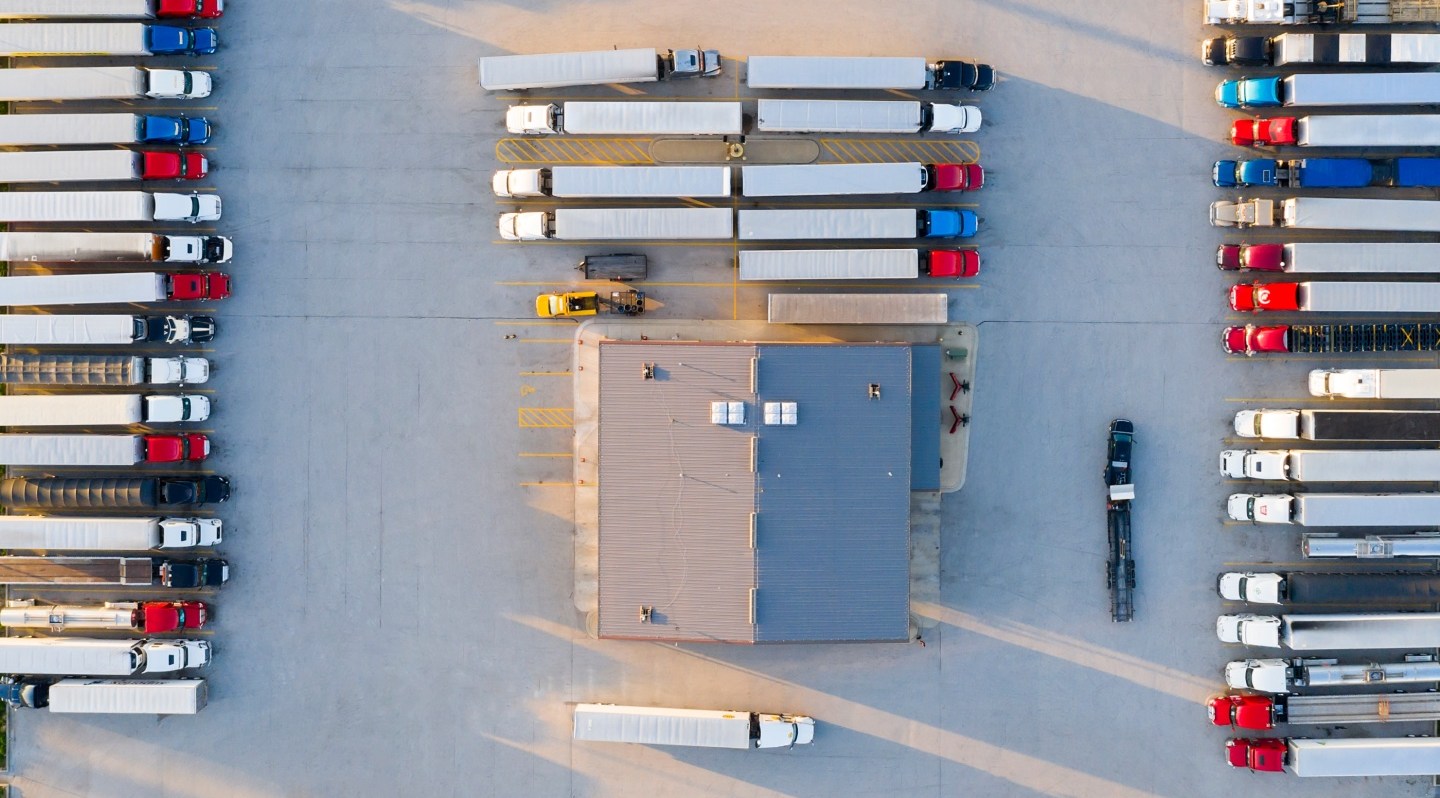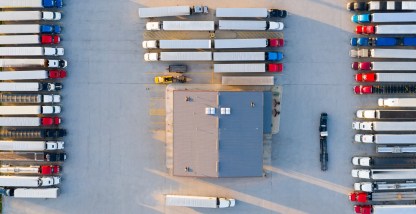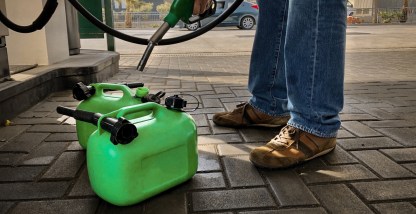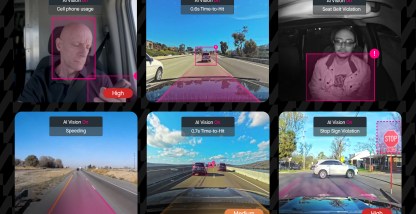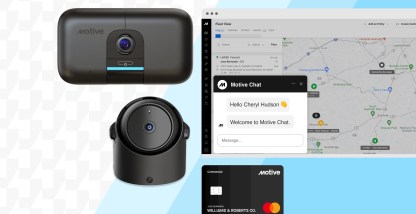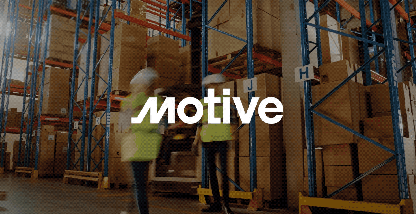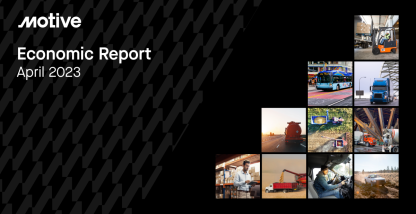As economic headwinds blow into 2024, operational efficiency will help fleets survive — and thrive.
As we step into the new year, physical economy leaders are taking stock of their challenges and setting new goals. Last year’s hurdles — rising costs, economic instability, labor shortages, and supply chain disruption — have carried over into 2024. So has the freight recession.
By now, the freight recession has lasted longer than many expected it to, driving small fleets out of business while causing significant headaches for larger ones. With a new year underway, 2024 is all about operational efficiency. Smart fleets realize that a dollar saved is a dollar earned. Those who can generate the most savings will be the ones to come out on top. As the freight recession continues, even small steps to optimize efficiency and cut costs will pay off.
Key takeaways:
- With low freight demand and the spot market struggling, fleets are left with too much capacity and a lot of stress.
- The freight recession (and the contraction of the trucking market) isn’t expected to ease until the second half of the year, making operational efficiency imperative now.
- The fleets that come out ahead will automate processes, increase production, and work to achieve more with less.
What’s behind the freight recession?
The freight recession appeared to be a “detox” from the pandemic’s artificial demand highs, as e-commerce growth came into balance with pre-pandemic 10-year averages. As demand for delivery services slowed, the industry was left with empty trucks and fewer shipments to move. Carriers folded, the trucking industry became more concentrated, and competition intensified. Here’s a closer look at what’s driving the freight recession.
1. Travel has picked up
Americans emerged from the pandemic with a renewed urge to travel. People became more active, and the high demand for goods tapered off. “From 2020 to 2022, the trucking industry boomed,” says Bob Costello, chief economist at American Trucking Associations. “Now we’re on the flip side of that. People are traveling. They’re going to events, experiences, you name it. And while all of these things require truck movements, they require a lot fewer of them than when we invest heavily in goods.”
While retail sales initially got hit hard, they’re rebounding now. Retail warehouse visits peaked in December, ending at levels nearly identical to those of 2022.
2. Sectors are contracting
Trends in online and in-store retail sales, manufacturing, and housing starts all have a big influence on truck freight. Each of these sectors is contracting year over year. For businesses that operate in the physical economy, it’s contributing to a tough environment. While housing fundamentals are strong, 30-year mortgages have gone from 3% to 7% over the last year, putting a damper on home sales and construction.
3. Costs are rising
As costs for things like insurance, and collisions stay high, it’s hindering fleet profitability. After wild fluctuations in 2023, diesel costs are finally falling, down nearly 50 cents year over year. But filling up is still expensive. Commercial fleets are paying the price, and not just at the pump. As the general public spends to commute to work or drive the kids to soccer, people have less to spend on goods. Freight demand is lower as a result. “All of this is having a big impact on fleet profitability,” Costello says.
4. The spot market is struggling
The spot market, where all the extra freight goes, has fallen 80% from its peak during the pandemic. There’s little extra freight out there. “For the last few years, fleets didn’t have to worry about filling their trucks,” Costello says. “Now they’re out there trying to drum up freight, align with shippers, and fill trucks and trailers. At the same time, there’s downward pressure on rates, which is a challenge for a lot of fleets.”
Strategies for boosting fleet efficiency
For physical economy businesses, the way forward is to improve efficiency, increase production, and gain visibility and control over fleet operations. Here are simple, straightforward steps you can take to not just get through the freight recession, but thrive through it.
1. Optimize equipment utilization
When equipment breaks down, sits idle, or gets stolen, it results in lost time, money, and resources. Roughly 66% of construction professionals say they spend more than a quarter of their work hours waiting for work to be done, often because they’re waiting for tools and equipment to arrive. Equipment theft alone costs the construction industry up to $1 billion annually, and energy and logistics businesses deal with many of the same issues.
Fortunately, fleet technology gives physical economy businesses the real-time visibility they need to overcome financial losses and tracking issues. Today’s solutions can show exactly where assets are situated at all times, making it easy to track their location, condition, and use in a single integrated platform.
Through artificial intelligence (AI) and automation, fleet technologies can map out efficient routes, monitor and reduce fuel consumption, and cut down on dangerous driving behaviors known to shorten the life of equipment.
2. Reduce fraud and theft

In Motive’s Physical Economy Outlook 2024, leaders estimate that 19% of current fleet spend is lost to fraud or theft. It’s even higher in industries like construction (22%). As a result of these challenges, leaders report an average revenue loss of $867,634 — with average reported losses exceeding $1 million in trucking and logistics and oil and gas.
Most operators rely on outdated methods, like manual tracking, to detect fraud. But manual tracking is unnecessary when automated platforms that integrate fleet and spend management offer the visibility and control leaders need to stop unauthorized fuel spend. With telematics-backed fraud detection, businesses are alerted to fraudulent activity in real time — before it becomes a problem.
3. Invest in AI
Artificial intelligence (AI) is getting a lot of buzz right now, and with good reason. In construction, oil and gas, and trucking and logistics, AI has opened the door to efficiency and automation. Manual tasks such as load sourcing, pricing, invoicing, and recruitment are becoming relics of the past. Capabilities are advancing, and leaders are buying in. Motive’s Physical Economy Outlook shows that:
- 76% of leaders want to use AI to gain critical visibility across their operations.
- 74% say AI is crucial to reducing costs and increasing efficiency.
- And 73% agree that roads are safer with AI-enabled cameras.
However leaders intend to use AI in 2024, one thing is clear: They’re excited about AI’s potential and what it means for their business.

4. Focus on employee engagement and retention
From 2022 to 2023, driver retention jumped 5%. Though overall churn remains a challenge, more drivers are staying put, particularly in industries like passenger transport, retail, and warehousing. Still, finding drivers isn’t easy. As the labor shortage continues, retaining the operators you have is essential. To retain talent and minimize turnover, consider the following.
- Create a clear path to promotion.
- U.S. businesses lose $1 trillion every year to turnover. Simply replacing a single employee can cost between one-half and two times that person’s annual salary. Clear advancement opportunities will attract top talent and help retain high performers.
- A LinkedIn survey shows that at the two-year mark, an employee who’s made an internal move has a 20% greater chance of staying with the company than those who didn’t have the same opportunity. The clearer you make the path to promotion, the easier it will be for employees to advance and stay.
- Establish a culture of learning.
- If operators are exhibiting lackluster performance, you don’t have to let them go. Work with them to build their skills. Dash cam-based driver coaching is a great way to retain operators as they improve. Today’s AI dash cams can coach drivers automatically, alerting them to road risks as they unfold, so operators can learn safer habits and prevent accidents in real time.
- Use driver safety scores to inspire improvement.
- Driver safety scores can help evaluate each driver’s performance based on safety metrics such as speeding, hard braking, and close following. Evaluate performance by individual or team, and use the safety scores to encourage friendly competition among drivers. Post a top performers list, reward drivers for improvement, and most of all, have fun with it.
5. Use a fleet card to cut fuel spend
With fuel costs averaging about 64 cents per mile, physical economy businesses are looking to contain their fuel spend in 2024. Fleet cards like the one from Motive help to save at the pump. Businesses can save as much as $0.20 per gallon at partner fuel stations such as Love’s, TA, 7-Eleven, and Road Ranger with Motive Card. Cardholders can use the card to pay for purchases anywhere that Mastercard is accepted. And with competitive discounts and no hidden fees, savings can add up fast.
The road to efficient operations starts here
It’s 2024. The time to improve your operations is now. To learn how Motive can enhance the efficiency of your business, get in touch. And be sure to download Motive’s Physical Economy Outlook 2024 to see how fleets like yours will make the most of artificial intelligence.




